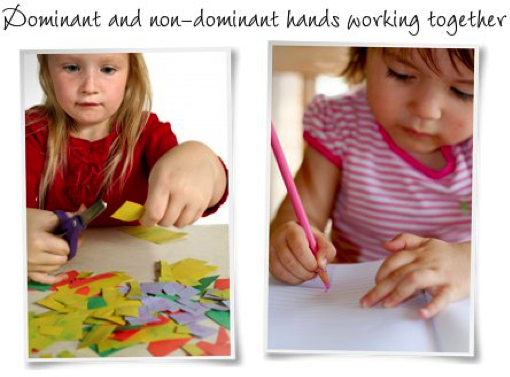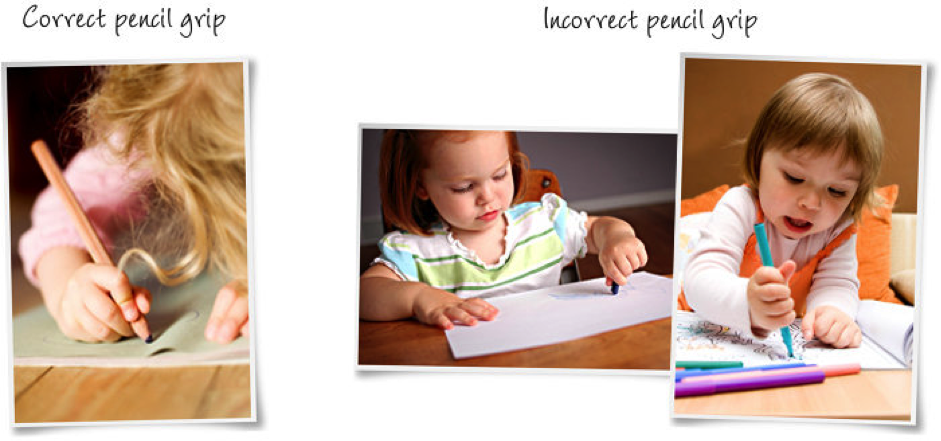Dyspraxia / DCD, Fine Motor Skills, General Information, Help for School and Kindy
How to Improve Handwriting for Kids and Fine Motor Skills
Fine motor skills are skills that involve a refined use of the small muscles controlling the wrist, hand, fingers, and thumb and how to improve handwriting for kids
The development of these skills allows one to be able to complete tasks such as writing, drawing, holding small items, buttoning clothing, turning pages, eating, cutting with scissors, and using computer keyboards. Mastery of fine motor skills requires precision and coordination.
Handwriting depends on fine motor skills to control the pencil in order to form letters and to use the correct pressure on the pen and on the paper. Improving fine motor skills will also help to improve handwriting.
Fine motor skills develop after gross motor skills, which control actions like throwing and kicking balls, as well as walking and jumping. Gross motor skills utilize larger muscle groups and require less precision.
We look at the foundation of development when we see problems with the fine motor skills. As OT’s, we are looking for the reasons why fine motor skills are not optimally developed and often find that a number of the skills that precedes the development of fine motor skills, are at risk or deficient.
These skills are called the sensory motor skills and include posture, balance, eye hand coordination and much more.
Role of the Dominant Hand and Non-Dominant Hand
Nearly all fine motor activities, including cutting and writing, require a dominant hand (being left-handed or right-handed) and a non-dominant hand. Hand dominance can be seen as early as age three or four, although it may not be firmly established until a child reaches age five.
Once a child becomes comfortable with one hand as the dominant hand, the remaining hand becomes the non-dominant hand by default. While the dominant hand performs tasks such as using a pencil or scissors, the non-dominant hand acts as the “stabilizer.”
The non-dominant hand supports the dominant hand, e.g. a right handed person would hold the pencil in the right hand and the left will support by keeping the paper in place.
For example, the hand holds the scissors when cutting while the other hand moves the paper.


How to Improve Handwriting
Since writing comfortably is a skill your child will use throughout his lifetime, it is wise to help your child develop a comfortable and efficient pencil grip when young.
Also, it is much easier to learn to hold a pencil correctly at the start than it is to unlearn an improper pencil grip and retrain muscles to learn the proper grip once your child is older. Establishing the correct pencil grip will also help to improve handwriting.


How do we observe that a child has issues with fine motor skills?
The following points are some indicators that a child might have challenges with fine motor skills:
- Avoids tasks that involve fine motor skills.
- Using too much or too little pressure when handling objects such as pencils.
- Prefers Lego to other tasks of fine motor skills.
- Difficulty staying in or on lines when colouring or writing.
- Difficulty to stay in a seated position at a table for periods of time; needs to move or to rock in the chair.
- Clumsy hand and finger movements, incorrect pencil grip.
- Doesn’t use the two hands cooperatively as when buttoning clothing.
- Avoids cutting and/or challenges to stay on line and/or challenges to control the paper and the scissors when cutting.
How Do We Help Children Develop Fine Motor Skills?
Practice, practice, practice. In most cases of fine motor skill development, practice does, in fact, make perfect. Using the same muscles can help children develop muscle memory, which is when repetition of one action allows that action to be performed almost automatically without much effort.
For example, pressing the correct buttons on video game controllers can be difficult the first few tries. But after playing the game a few times, we tend to master the buttons on the controller.
Whether or not we can master the video game itself is a different story, but it does become second nature to press certain buttons to run or jump in the game.
It is most important to look out for problems with the underlying and foundational sensory motor skills such as posture, balance, gross motor skill development and muscle tone. If the child has issues with foundational skills the fine motor skills will not develop optimally.
At age 5 – 6, your child should be confident and fluent with the following tasks:
- Cutting out simple shapes.
- Coordinating hands to brush teeth or hair.
- Designing own Lego models.
- Dressing and undressing independently (excluding shoe laces).
- Writing numbers 1-10 independently.
- Self-generating letters independently.
- Copying a triangle.
- Colouring within the lines.
- Holding a pencil with a 3pt grasp and generate movement from fingers.
- Cut and paste projects.
- Drawing basic pictures.
- Opening zip lock bags, containers and lunch boxes.
- Using a knife and fork for soft foods.
- Completing a 20pc puzzle